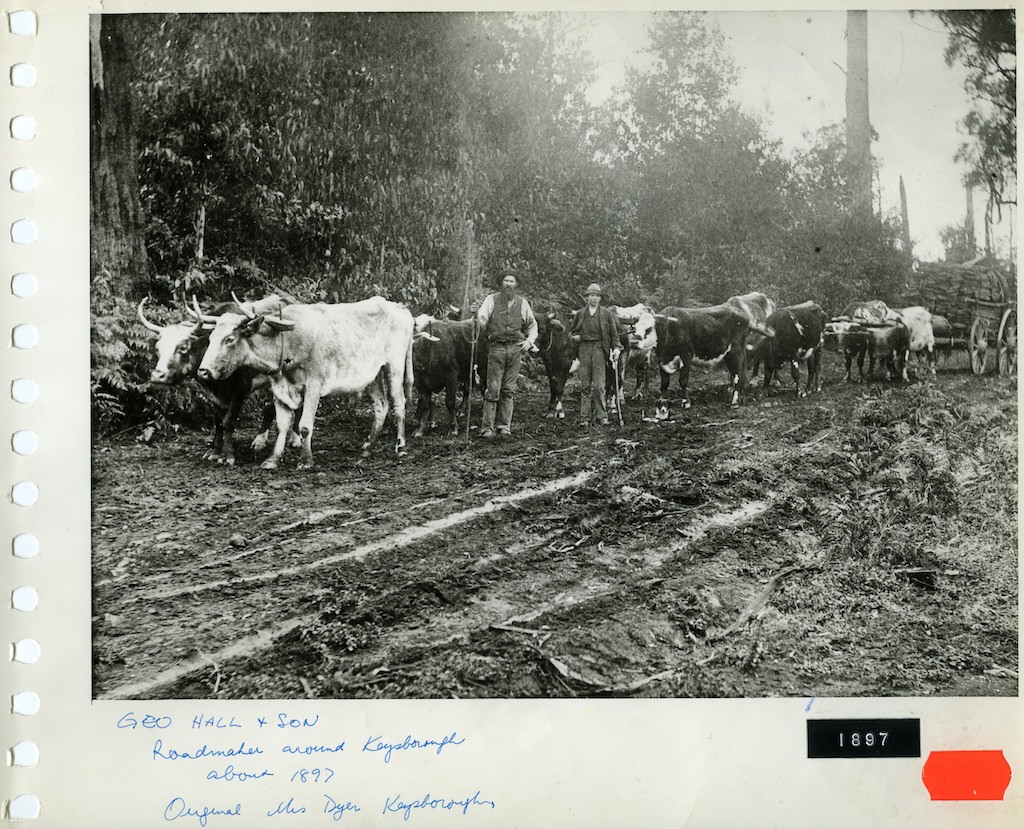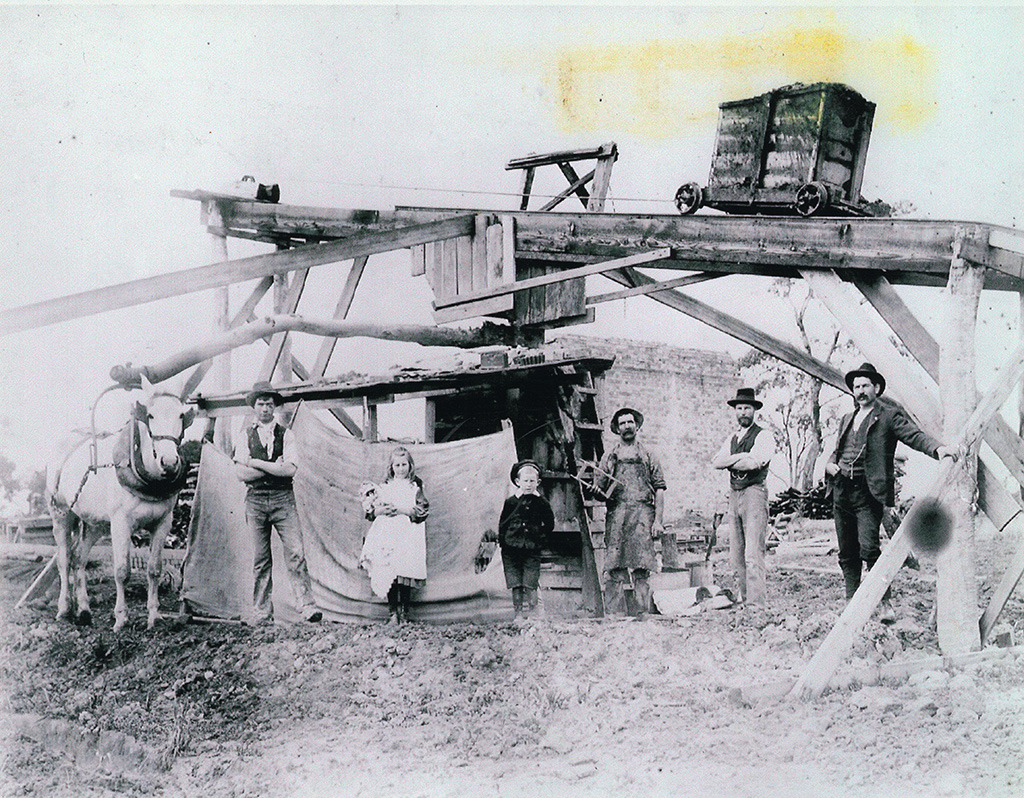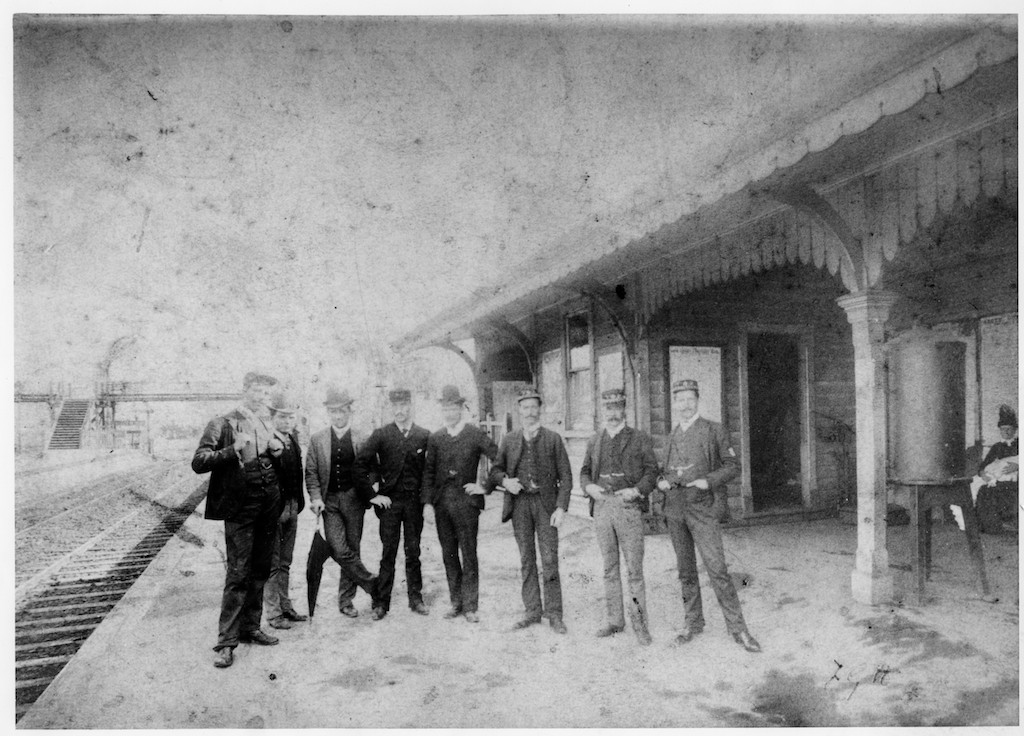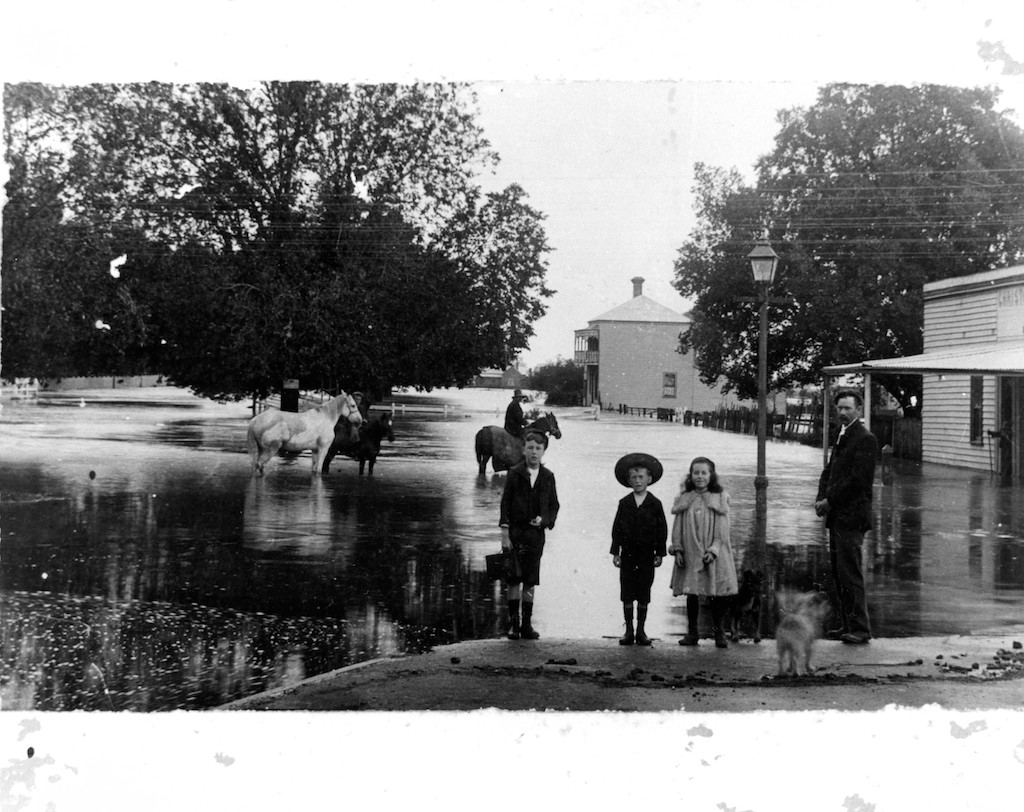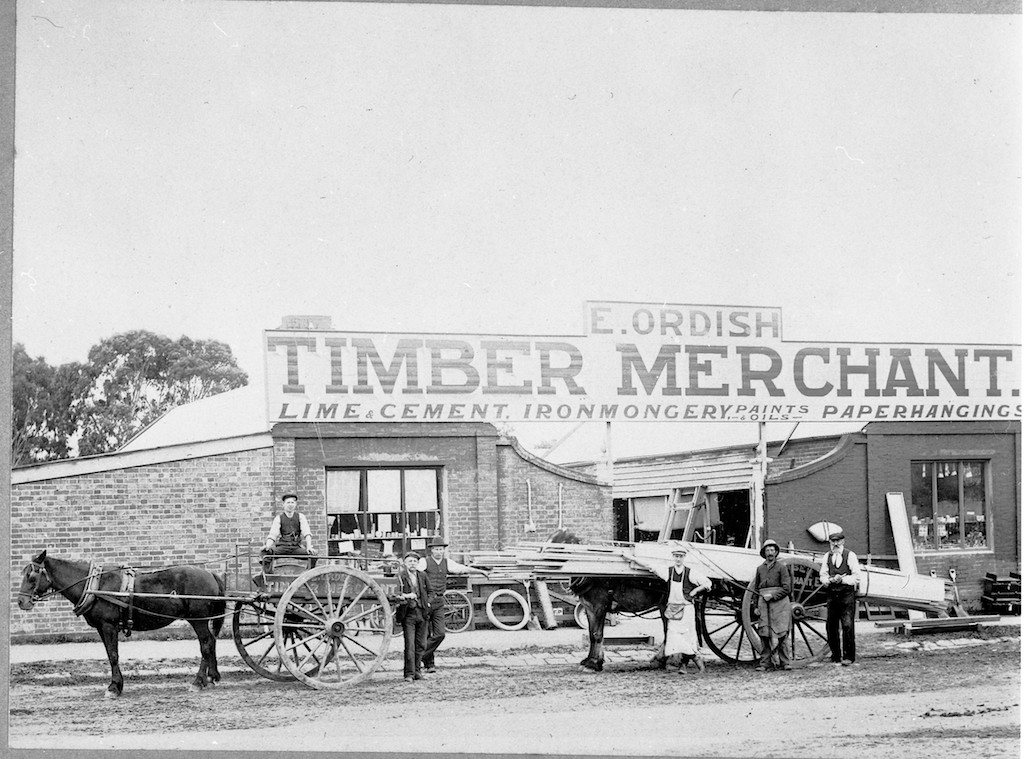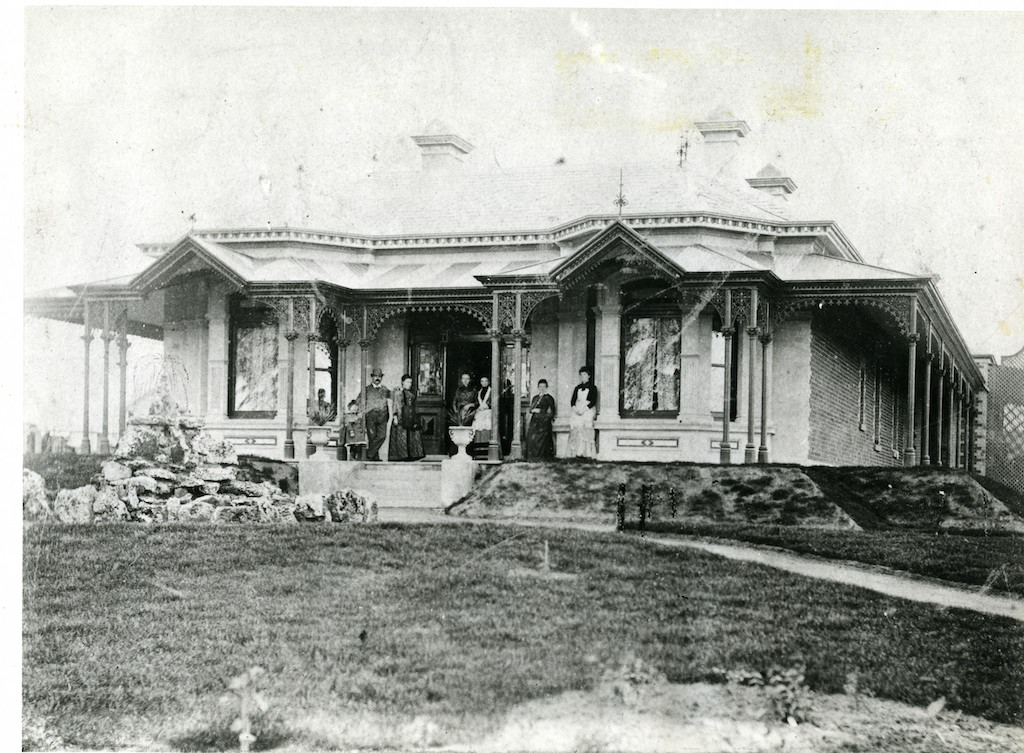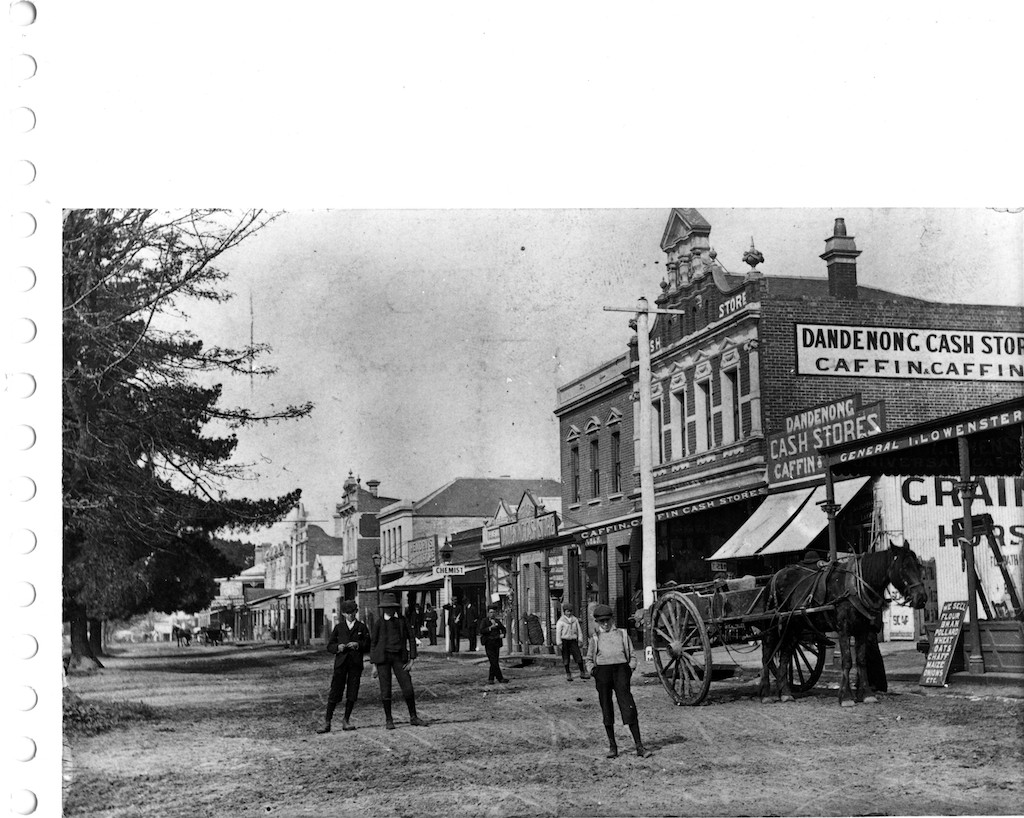The Day the War came to Dandenong
25th April 1915
Researched and written by Chris Keys of the Dandenong & District Historical Society
The 1914 Dandenong Football team which lost the final by 4 points on 29th August was greatly diminished due to members of their team enlisting in the Expeditionary Forces prior to the game. Over the next few months we are going to tell the tale of these fine young lads and others who departed from our district and fought in the Great War.
The 1914 Dandenong Football Team
This is the story of three of the first Dandenong enlistments and the first to give their lives at Gallipoli. Two of which were missing members of the Football Team.
Eric Douglas Martin
Eric Douglas Martin joined on the 20th August 1914, he was the son of William Henry Martin of Bend Rd Keysborough and aged 21. He was very well known in the District as from the age of 16 he was working at the Dandenong Post Office as a telegraph messenger and during his employment he proved himself an obliging and painstaking assistant. He was quickly promoted to the position of letter carrier at Malvern post office.
In 1912 Martin resigned from the post office in order to join his father in farming pursuits in Keysborough, and when the war broke out on 4th August 1914 Martin quickly volunteered and Joined the 8th Infantry Battalion and swore the oath that he would well and truly serve his Sovereign Lord the King in the Australian Imperial Forces from 20th August 2014 until the end of the War, and further period of four months thereafter unless sooner lawfully discharged, dismissed, or removed therefrom: and that he would resist His Majesty's enemies and cause His Majesty's peace to be kept and maintained; and that he would in all matters appertaining to his service faithfully discharge his duty according to law. All enlistments took this “Oath". Martin was one of the first. He along with a number of his fellow Dandenong residents trained at Broadmeadows from 24th August. The 8th Battalion was among the first infantry units raised for the AIF during the First World War.
The battalion was raised from rural Victoria by Lieutenant Colonel William Bolton within a fortnight of the declaration of war and embarked just two months later.
On the 19th October Martin along with the Couve brother's embarked on HMAT A24 Benalla and headed to Egypt.
HMAT Benalla loading troops at Port Melbourne 19th October 1914
HMAT Benalla loading troops at Port Melbourne 19 October 1914
HMAT Benalla joined the first convoy of 38 Australian and New Zealand ships and four cruisers that left Albany, Western Australia, on November 1st 1914. At that time there remained an ever present danger from enemy ships in the Indian Ocean, in particular the German raider Emden. One of the light cruisers escorting the convoy was HMAS Sydney and it was an eventful trip for this warship as en route across the Indian Ocean, the Sydney peeled off and sank Emden near the Cocos Islands. The defeat of this threat meant that future convoys from Australia and New Zealand could travel unescorted across the Indian Ocean. The 'Benalla along with the rest of the convoy eventually arrived safely in Egypt on 2 December 1914.
In a letter written on the 13th January 1915, Corporal Harold Edward Tullock who was also with Martin & the Couve brothers in the 8th Battalion described their camp at Mena Egypt.
"We have nearly completed our training here and are expecting to be at the Turks on the Suez Canal shortly. Tomorrow we go for a long march in full war equipment. In another few days we are going to practice an attack under artillery fire. The guns will be stationed on a hill in the rear, and firing ball cartridges, we will advance to the attack on trenches lined with dummy men. The artillery meanwhile will be pouring in a hot fire, with shells and shrapnel over our heads. They will continue firing till it is impossible to fire without injuring us. We will conclude the game with a bayonet charge into and over the trenches. We had a Merry Xmas on stew, dry bread and sand".
Three months later on the 5th April 1915 all four men embarked from Alexandria on the "Clan McGilvarry for the Gallipoli campaign. Only one survived to come back to Dandenong.
News came of the landing of the 8th Battalion at Gallipoli, via Private John George Pearson whose parents lived at Keysborough and had sailed on the Benalla along with Martin, Tullock and the Couve brothers.
“We (the 8th) landed about 7.30am on the 25th April and went straight up the hill, over that, down a deep valley, and half way up another hill, always making straight for the Turks. The bullets and shells were landing about us all the time. Here we took our packs off, and left them with one man in charge. The word came down that reinforcements were needed in front and we doubled up over the brow of the hill with Lieutenant Couve leading. My word the fire was hot, the bullets were humming around us like bees, and the shells were bursting everywhere. I got separated from our platoon in going over some rough ground, but kept on going forward with some to the 9th battalion chaps. There were no officers to be seen by this time, as they were nearly all wounded, so we could just keep on going as far as we could. We got three guns from the Turks (Pom Poms), but we could not advance any further, as the fire was too heavy. It was about one pm that I got hit, and laid there for a while, as the shock nearly stunned me, and then I rolled over and started to crawl back. Men were dropping everywhere, and I was expecting to get another any minute but I didn’t. I crawled down a deep gully then, using my rifle as a crutch I started for the beach; I went a good way and found our doctor and some A.M.C’s; they patched me up, and another chap helped me down to the boats. After waiting for a while, we go sent aboard the ship, and arrived here in Alexandria on the Friday about 1pm. There are only three out of our tent that I don’t know anything about – Eric Martin and two new chaps – but, you know, they may have been wounded and sent on another boat, or they may be all right and with the company. All the rest are wounded, that is out of our tent barring one – and he is at rest, poor chap. I now see that Private Eric Martin’s name has, unfortunately, been included among the list of those killed in action. The stretcher bearers could not get up near the firing line at all, as half of them were wounded also. Any of the wounded that could not get back before our fellows retired back to the hill were murdered by the Turks. The place where we landed goes by the name of Sadd-el-Bhair, so if you have a map you will be able to see it for yourself”.
George Pearson was medically discharged and returned to Australia on 3 September 1915. He had also embarked on the Benalla with Martin & the Couve brothers on 19th October 1914.
News arrived via the Journal on Thursday 6th May that one of Dandenong’s Volunteers Private Eric Douglas Martin had been killed in action and the consequences of the war were brought home to the residents of this town. Sympathetic feelings were expressed on all sides for the bereaved relatives. Eager enquiries were made in regard to other volunteers from these parts, but no further information is available at the time of our going to press. Eric was describe as a person of most generous disposition and had a large circle of friends in his neighbourhood of Keysborough.
Records show that Martin died of wounds on 25th April 1915 and was buried in isolated graves Anzac, Victoria Gully N side 150 yrs. from the Water Tanks Gallipoli about 1000yrds S.E. of Anzac Gove. Later his body was exhumed and he was buried at Lone Pine Cemetery Gallipoli Peninsula Turkey.
Lone Pine Cemetery Gallipoli Peninsula
Alan Crawford Couve (Dutchy)
Alan Crawford Couve (Dutchy) led his men into battle on 25 April 1915 and died of wounds inflicted on that day on 26th April 1915. He is buried in the Beach Cemetery Gallipoli Peninsula Turkey. Lieut Colonel W K Bolton wrote to Eileen Couve Alan’s sister in January 1916, stating that Alan Couve had died from gunshot wound to the skull. Wound said to be near the top of head, the bullet going in near the forehead over the right eye and coming out somewhere about the crown of the head. On 25 April the wound was thought to be superficial when examined by his sergeant immediately it occurred and with the help of a private Couve was carried back to the beach leaving him unconscious at the dressing station on the Beach at the Anzac Landing Gallipoli he was expected back to his unit in 3 or 4 days.
A month later in May 2015 he was posted dead.
Beach Cemetery Gallipoli Peninsula
On 20th May 1915 The Journal reported:
A C Gouve was the second son of Mr Jason Couve chemist of Dandenong and was 21 years of age.
Lieut Couve when the war broke out had been studying chemistry for two years and was a prominent member of the Dandenong football team.
On Tuesday morning widespread regret was expressed when it became known that Lieut Couve had succumbed to the wounds received whilst fighting with the 8th Battalion at the Dardanelles, and many messages of condolence have been received by the sorrowing relatives. The flag on the Town Hall was at half mast, in honour of the local volunteer and mourning was displayed outside the business premises in Lonsdale St.
Henry Thomas Couve (Tom)
Henry Thomas Ladson Couve (Tom) was twenty four when he set off with his brother Alan (Dutchy), Eric Martin and other Dandenong Volunteers to fight the war. He quickly rose through the ranks and on the 28th April 1915 was promoted to 2nd Lieutenant of the 8th Battalion. On the 8th of May just 15days after his brother’s death he was killed in action on the Gallipoli peninsular.
News did not reach Dandenong till June 1915 and the Journal reported on 10th June that Lieutenant Tom Couve was killed in action . Lieut Couve , prior to the outbreak of the war was engaged in the Public Works department and proved himself an efficient officer in the newly formed Country Roads Board. He had occupied the position of hon.secretary of the Dandenong football club and was also a playing member. Widespread regret has been expressed for the bereaved parents, whose two sons have been killed at Gallipoli.
Lieut Tom Couve is remembered at Helles Memorial, Cape Helles Gallipoli Turkey. The Helles Memorial has 20,771 names on it and is both the memorial to the Gallipoli campaign and to men who fell in the campaign and whose graves are unknown or who were lost or buried at sea in Gallipoli waters. It stands on the tip of the Peninsula and is in the form of an obelisk over 30m high that can be seen by ships passing through the Dardanelles.
Cape Helles Memorial, Gallipoli
Corporal John Walker wrote to his father and part of the letter was published in The Journal on 26th August 1915. Writing about the middle of June last, from the trenches, he mentions that there are lots of Dandenong boys “kicking about” near him – Jim Kennedy, C Turner, Jack McQade (Dandenong footballers). Jack McQuade looks very fit and well; also Heggall, Claude Chalmers (in the 6th battalion) Eric Keys (in the Light Horse, looking very well). Tyers (with the artillery) Stretch, Austin, Hepburn (in the 5th battalion) are quite close to the writer in the firing lines.
The following are his verbatim remarks as to the two Couves who lost their lives in the cause:- “ I miss the two Couves very much. Both Tom and Dutchy were well thought of, in fact very much admired. Those who faced the task in the beginning, and were killed, did their duty and died like men. Even I, who am not a military expert, can vouch for that” These remarks make us think also of Eric Martin. He mentions that Dutchy, who was badly wounded, must have been buried at sea, as he believes he died next day in a hospital ship. He searched for Tom’s grave but found he was killed at Point Hellis, and not where he (the writer was at the time).
Corporal John Walker was himself killed on 27th July 1916 in France.

